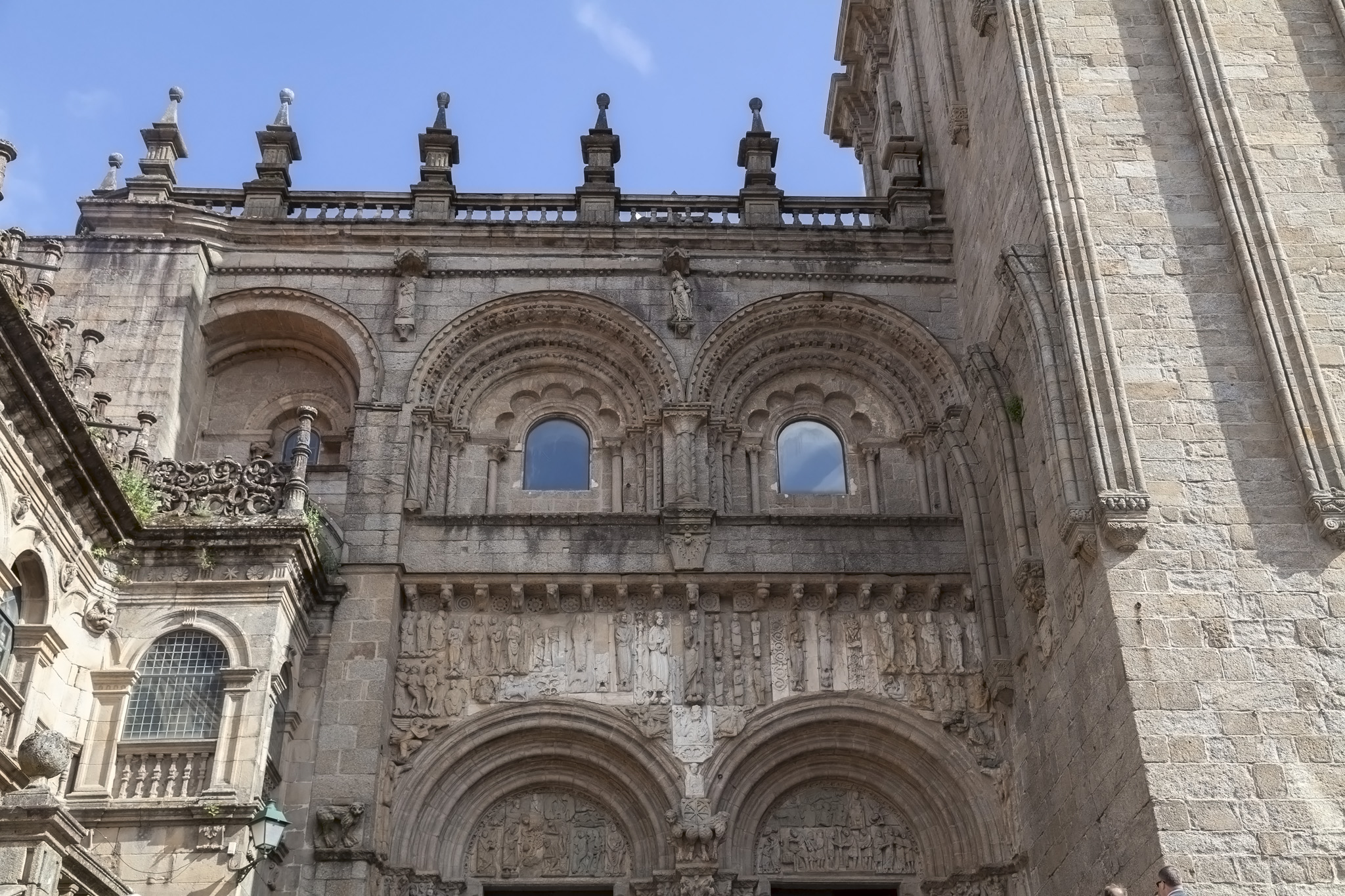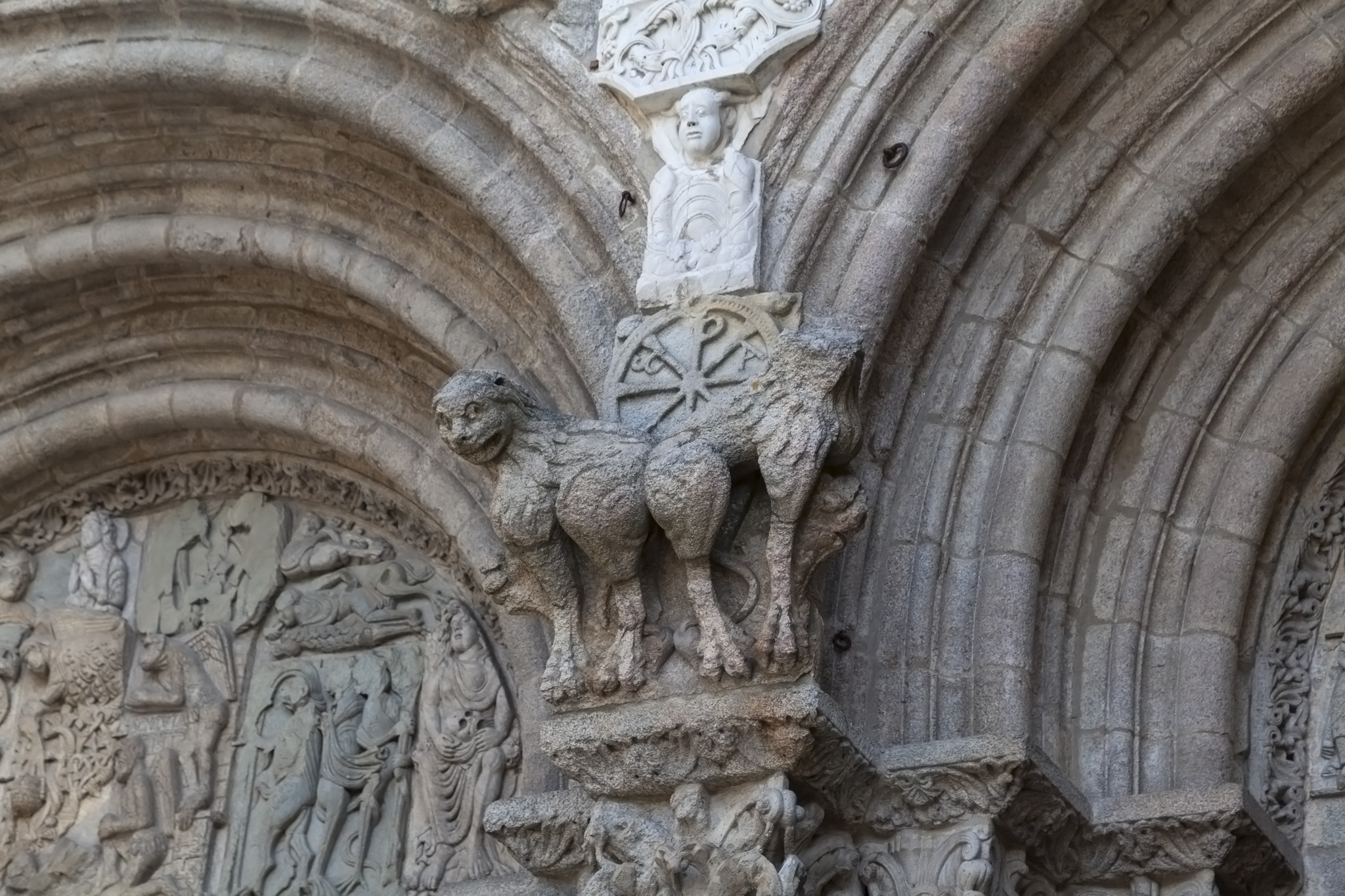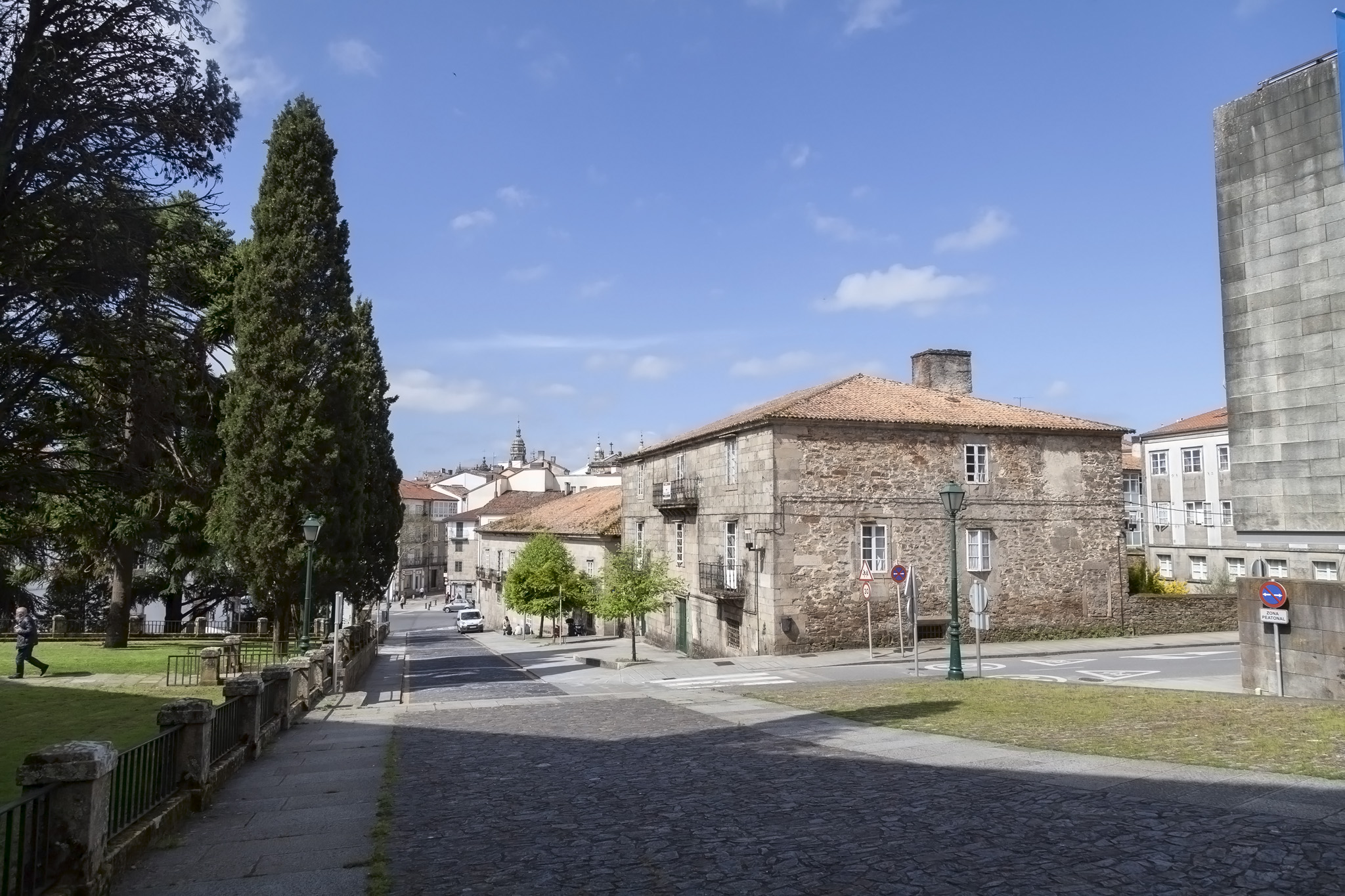This post is the first of three detailing the excursion we took when the Sapphire Princess cruise ship docked at A Coruña in northern Spain in May 2018. As you’ve probably gathered from the post title that excursion was to the UNESCO World Heritage Site of Santiago de Compostela.
It is, of course, possible to make your own way from the port to the city of Santiago de Compostela if you’re arriving on a cruise but it should be noted that the travel time by coach is around 45-60 minutes depending on traffic so you’re not exactly near the ship if you run into any difficulties with public transport. Some other people we know who were visiting the city on another cruise ship after us had originally planned to use the train until they discovered that there was a large gap in the schedule that might have made getting back on time a risk. We elected to pick an excursion arranged through Princess Cruises that simply took care of taking us to the city and getting us back with a guide explaining the history of the area while travelling but leaving us free to explore on our own for several hours on arrival, all safe in the knowledge that the ship would wait for us. When excursions are reasonably priced we will always err towards them rather than trying to save a few quid when we’re already paying as much as we are for the cruise anyway.
Our coach drop-off and pick-up point was at Parking Xoán XXIII which is just to the north of the Convento de San Francisco de Santiago, itself just to the north of the medieval centre of Santiago de Compostela if you’re looking for it on a map. A five-minute walk took us into the main square.
The main square in Santiago de Compostela’s Old Town area is called the Praza do Obradoiro. The buildings surrounding it look fabulous architecturally with the most prominent ones being to the western and eastern sides of the square, the city hall and the façade of the cathedral respectively. The cathedral, as you’re probably aware, is the main draw for people visiting Santiago de Compostela, either as tourists or as the 100,000+ pilgrims completing the Camino de Santiago (Way of Saint James) pilgrimage each year.
From Wikipedia:
According to medieval legend, the remains of the apostle James were brought to Galicia for burial; in 813, the light of a bright star guided a shepherd who was watching his flock at night to the burial site in Santiago de Compostela. […] To honour St. James, the cathedral was built on the spot where his remains were said to have been found. The legend, which included numerous miraculous events, enabled the Catholic faithful to bolster support for their stronghold in northern Spain during the Christian crusades against the Moors, but also led to the growth and development of the city.
If you’re standing in the Praza do Obradoiro and want to enter the impressive-looking (even with the scaffolding during our visit) cathedral the best approach is to walk out of the square via the alley to the southeast then immediately turn left along the southernmost face of the building. The entrance is up a flight of steps in the Praza das Praterías. Entry to the cathedral is free but it’s worth checking to see if there are any planned church services as this will affect your visit. It is possible to pay for a rooftop tour as well but despite the warm-looking photos there was a bitterly cold wind on the day of our visit (you might have noticed if you’ve watched the video) and we’d foolishly only worn t-shirts; we decided the roof can wait until we return, should that happen.
Construction of the present Cathedral of Santiago de Compostela, one of the largest cathedrals in Europe, began in the late 11th century. Almost 100 metres long it has a classically-arranged cruciform-shaped interior and the most eye-catching elements are the gold choir area and organ as well as the large, hanging censer (the Botafumeiro, the largest censer in the world) used to dispense burning incense to the congregation when pulled by eight tiraboleiros. The cathedral seats were pretty full when we arrived as it was approaching the time for a mass to begin. We spoke after our visit with some fellow cruise passengers who had come on the excursion with us and they had spent nearly their full time sat in the cathedral, the reason being that they were hoping to see the censer swung. This didn’t happen but the reason for that – had they been paying attention to our guide on the coach – was that it’s only done on special occasions (and this wasn’t one) or if a pilgrim makes a very sizeable donation to have the ceremony performed (and, clearly, one didn’t).
We had no interest in actually attending the upcoming mass and so, like many other visitors, completed a cross-shaped circuit of the cathedral, taking photos of some of the more interesting details to the backdrop of the general low murmur of people talking, only occasionally broken up by a voice over a speaker reminding people to be silent. There were a couple of areas you could queue for a short period to walk through that took you to a higher view down the nave of the church as well as down a few steps into the crypt housing the relics of Saint James and two of his disciples; photography was tricky in both these areas on account of the general crush of people constantly moving through them.
Leaving the cathedral through the gift shop (naturally) we emerged back into the streets of Santiago de Compostela in Praza da Quintana on the eastern side of the building. This gave us a chance to take a quick scan around at the various landmarks in view, notably the main towers of the cathedral (the Clock Tower and the Treasure Tower with its seemingly out-of-place pyramidal top) while we got our bearings and consulted our maps to work out the route to our next destination.
If we’re going to have enough free time to explore a place when we’re travelling – as opposed to taking an excursion that effectively eats up all the time we’re present – then we research the area beforehand and typically have a not-cast-in-stone idea of what we might want to see. It’s only a wish list and we’re flexible enough to bend with whatever the weather or surprises on the day may throw at us but we do try to make sure that there’s at least something on it that’s not provided on any of the offered tours. There’s something special about visiting a place and not only seeing the obvious, big tourist elements but also something potentially unique amongst the people you’re with if only to give you something different to talk about. On this trip to Santiago de Compostela we’d spotted an interesting-looking museum just to the northeast of the Old Town called Museo do Pobo Galego (about fifteen minutes away on foot from the cathedral) and with plenty of time in hand it was in this direction that we set off.
One of the first buildings we passed was a monastery – the Mosteiro de San Paio de Antealtares – which had a small window through which it was possible to buy cakes off nuns. We decided we didn’t need any cakes and I thought it best out of respect not to take any photos of this event taking place but it did make us smile and if you’re after a cake baked by a nun I’ve got nowhere else I could possibly recommend. Being still fairly early in the day – not quite noon at this point – the narrow streets were mostly empty and many of the places we walked past that could possibly have been restaurants or bars were closed up but there were enough interesting-looking buildings or statues to keep my camera-finger happy.
It was fairly easy to spot when we’d emerged from the Old Town of Santiago de Compostela as the architecture suddenly modernised a little and traffic suddenly appeared on roads. Still bearing roughly northeast we crossed over the Rúa da Virxe da Cerca and headed up the slight incline of the Costa de San Domingos towards the largest building in view which was our destination, the museum. To the left of it as we approached there was a delightfully modernist structure suitably housing contemporary art. We talked about visiting it after the museum but as it turned out we spent longer there than planned so decided to pass on it this time around.
The second post of our cruise excursion in Santiago de Compostela will cover our visit to the Museo do Pobo Galego (museum of the Galician people).


























































